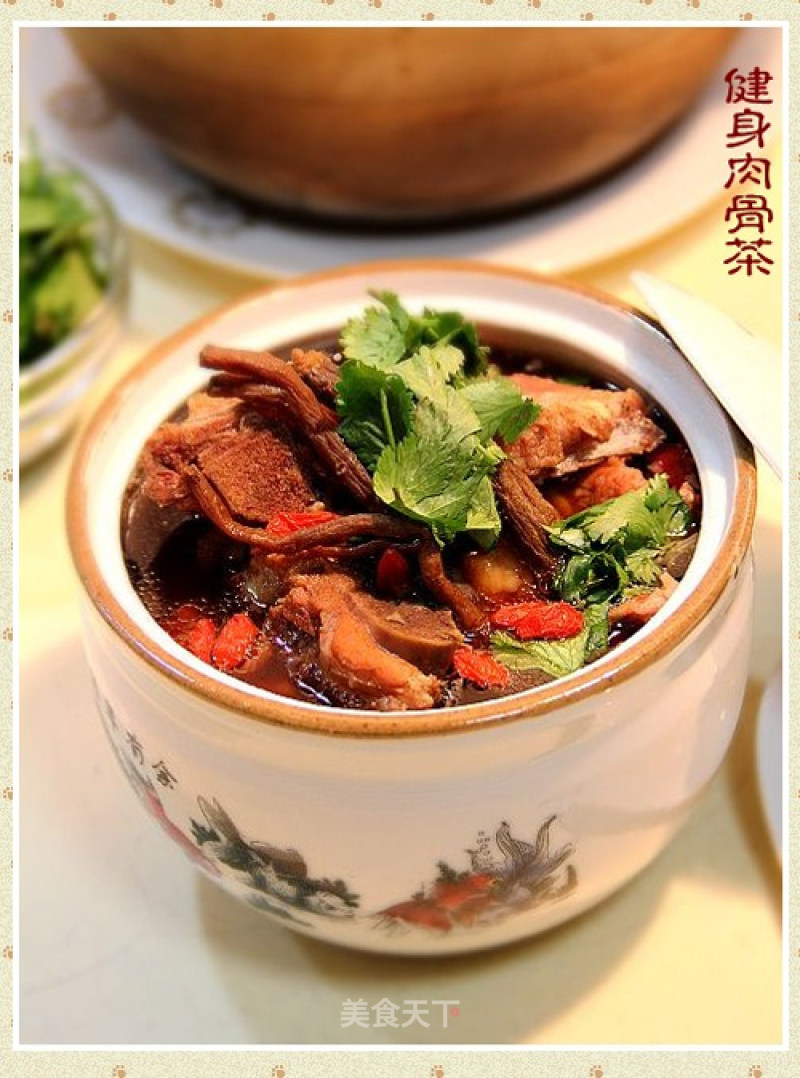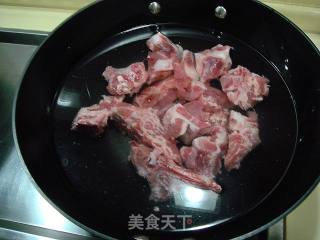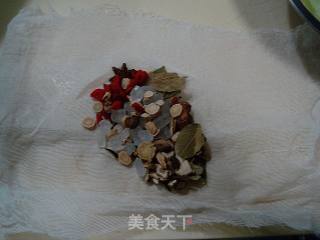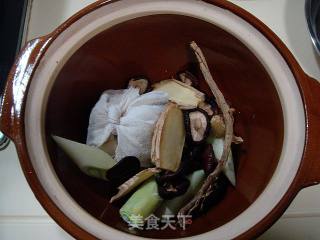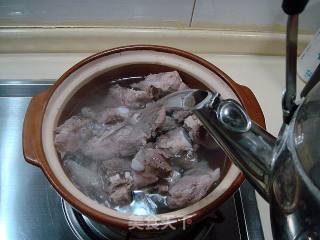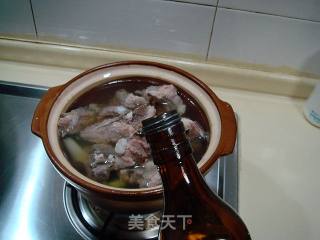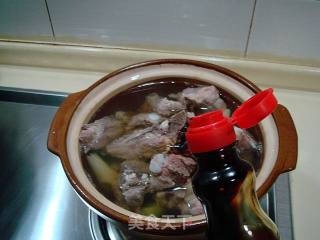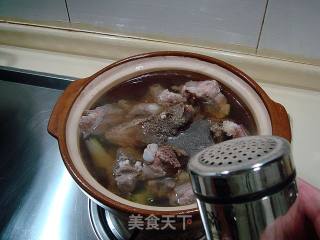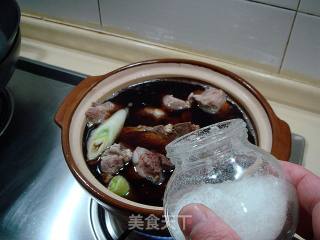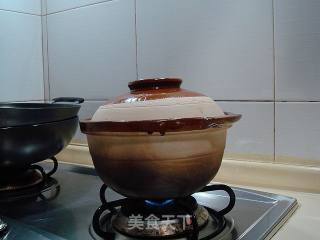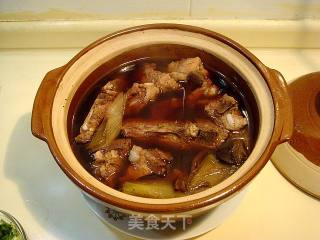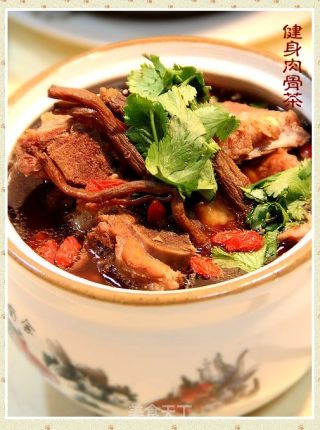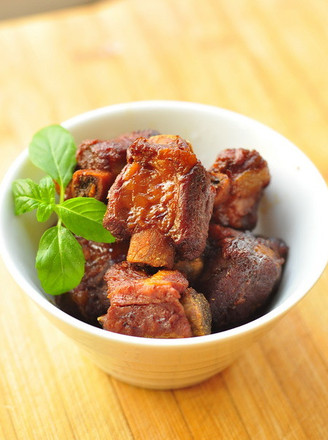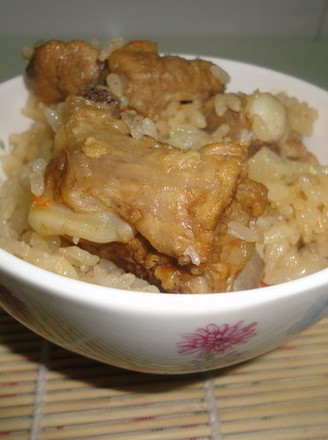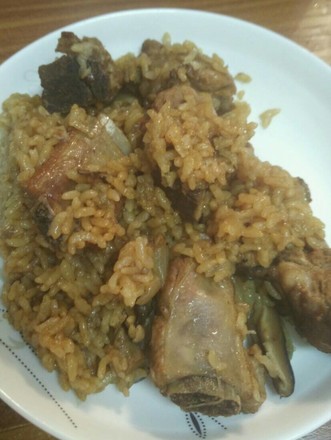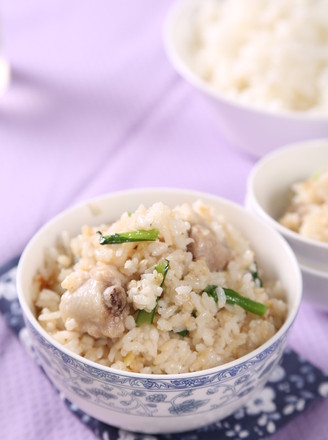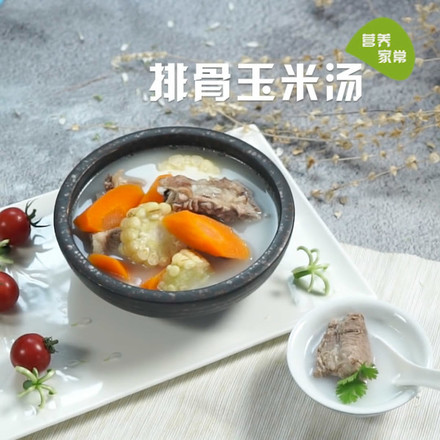"bak Kut Teh", A Delicacy to Keep Away The Cold and Health
by Large frying spoon
Favorite
Difficulty
Easy
Time
2h
Serving
2
Working abroad is sometimes very busy. At noon, I can order a piece of Bak Kut Teh and a dish of stir-fried green vegetables at a nearby Chinese restaurant, and a bowl of rice is a good lunch. Among them, soup, vegetables, meat and vegetables All are available, fast and easy.
There are many ways of "Bak Kut Teh", and the requirements for raw materials are different in spring, summer, autumn and winter. Among them, there are damp-repellent, health-preserving, strong muscles and bones, and some tonic for special customers. "Bak Kut Teh" is also divided into the different practices of Fujian and Hainan Hakkas. The Fujian school focuses on nourishment, so the taste of Chinese medicine is relatively strong, while the Hainan school focuses on the spicy taste of pepper. Although the method is slightly different, the main ingredient is used. They are all the same, pork bones and pork are used.
"Bak Kut Teh" is Hokkien and its English name is Bak-Kut-The. It is one of the cuisines in Southeast Asia. It is available in Singapore, Malaysia and other places. "Bak Kut Teh" is a soup cooked with pork and pork bones and Chinese medicine. Its unique flavor is well-known overseas and is loved by tourists and Chinese from all over the world. Among them, Klang Bak Kut Teh is the most famous.
According to legend, when the Chinese first came to Nanyang to start a business, because of poor living conditions, people were far away from their homeland and did not adapt to the local hot and humid climate. Inconsistent water and soil caused most people to suffer from various diseases. For example, some tropical diseases, such as rheumatism, malaria, heat, and local plague, are constantly eroding people's health, and the health of many people with strong physiques has also begun to go from bad to worse. After the illness, most people lost their lives overseas due to only a minor illness because they had no money to treat the illness. For the sake of self-preservation, people have begun to develop remedies that can treat diseases, eliminate dampness and strengthen the body. Among the older generation of entrepreneurs, there are also those who understand medicine. Everyone tried to use various local and self-carried Chinese herbal medicines, including bay leaf, pepper, lemon leaf, chicken bone grass, western ginseng, bawang flower, gastrodia, astragalus, angelica, and wolfberry , Codonopsis, etc. to cook medicine, and for different local diseases such as different seasons, climate changes and differences in human physique, several Chinese medicine decoctions were combined. However, the Chinese at that time were afraid of taking medicines publicly. Locals and Western colonists said that unhealthy Chinese workers would be excluded from choosing jobs, so everyone called this medicinal soup "tea." In those days, the herbal teas developed by the sages played a huge role in that period and also provided great protection for the health of the Chinese who immigrated to Nanyang in the early period.
As the stars shifted, people gradually began to adapt to the local climate and living conditions. One time someone accidentally put pork bones in the medicinal soup. I didn’t expect this medicinal soup with pig bones to taste very fragrant. Thick and delicious, unique flavor. Later, people specially adjusted the ingredients for making tea. After continuous improvement, some pork was added. Finally, it was replaced with pork ribs. After several years of inheritance, it became the famous delicacy "Meat Bone" familiar to overseas Chinese. tea".
To put it bluntly, "Bak Kut Teh" is the same as the stewed pork ribs in northern my country, except that many Chinese herbs are added and used to modulate the taste of the soup and achieve its nourishing effect according to different effects and seasons. It belongs to an authentic Chinese medicinal food developed and contributed by the sages of overseas Chinese. "Bak Kut Teh" can eat meat and drink soup. It is a very delicious nourishing food. It is derived from overseas Dangen. In China.
The ingredients I chose for this "bak Kut Teh" made today are more suitable for warming up in winter and have a certain nourishing effect. The main methods are as follows;"
There are many ways of "Bak Kut Teh", and the requirements for raw materials are different in spring, summer, autumn and winter. Among them, there are damp-repellent, health-preserving, strong muscles and bones, and some tonic for special customers. "Bak Kut Teh" is also divided into the different practices of Fujian and Hainan Hakkas. The Fujian school focuses on nourishment, so the taste of Chinese medicine is relatively strong, while the Hainan school focuses on the spicy taste of pepper. Although the method is slightly different, the main ingredient is used. They are all the same, pork bones and pork are used.
"Bak Kut Teh" is Hokkien and its English name is Bak-Kut-The. It is one of the cuisines in Southeast Asia. It is available in Singapore, Malaysia and other places. "Bak Kut Teh" is a soup cooked with pork and pork bones and Chinese medicine. Its unique flavor is well-known overseas and is loved by tourists and Chinese from all over the world. Among them, Klang Bak Kut Teh is the most famous.
According to legend, when the Chinese first came to Nanyang to start a business, because of poor living conditions, people were far away from their homeland and did not adapt to the local hot and humid climate. Inconsistent water and soil caused most people to suffer from various diseases. For example, some tropical diseases, such as rheumatism, malaria, heat, and local plague, are constantly eroding people's health, and the health of many people with strong physiques has also begun to go from bad to worse. After the illness, most people lost their lives overseas due to only a minor illness because they had no money to treat the illness. For the sake of self-preservation, people have begun to develop remedies that can treat diseases, eliminate dampness and strengthen the body. Among the older generation of entrepreneurs, there are also those who understand medicine. Everyone tried to use various local and self-carried Chinese herbal medicines, including bay leaf, pepper, lemon leaf, chicken bone grass, western ginseng, bawang flower, gastrodia, astragalus, angelica, and wolfberry , Codonopsis, etc. to cook medicine, and for different local diseases such as different seasons, climate changes and differences in human physique, several Chinese medicine decoctions were combined. However, the Chinese at that time were afraid of taking medicines publicly. Locals and Western colonists said that unhealthy Chinese workers would be excluded from choosing jobs, so everyone called this medicinal soup "tea." In those days, the herbal teas developed by the sages played a huge role in that period and also provided great protection for the health of the Chinese who immigrated to Nanyang in the early period.
As the stars shifted, people gradually began to adapt to the local climate and living conditions. One time someone accidentally put pork bones in the medicinal soup. I didn’t expect this medicinal soup with pig bones to taste very fragrant. Thick and delicious, unique flavor. Later, people specially adjusted the ingredients for making tea. After continuous improvement, some pork was added. Finally, it was replaced with pork ribs. After several years of inheritance, it became the famous delicacy "Meat Bone" familiar to overseas Chinese. tea".
To put it bluntly, "Bak Kut Teh" is the same as the stewed pork ribs in northern my country, except that many Chinese herbs are added and used to modulate the taste of the soup and achieve its nourishing effect according to different effects and seasons. It belongs to an authentic Chinese medicinal food developed and contributed by the sages of overseas Chinese. "Bak Kut Teh" can eat meat and drink soup. It is a very delicious nourishing food. It is derived from overseas Dangen. In China.
The ingredients I chose for this "bak Kut Teh" made today are more suitable for warming up in winter and have a certain nourishing effect. The main methods are as follows;"

